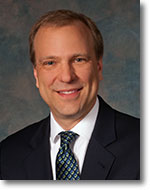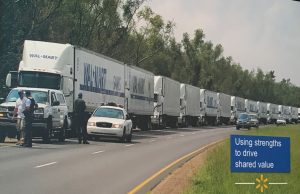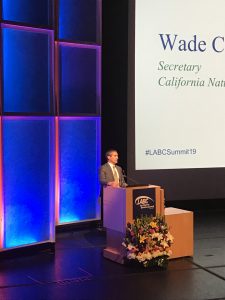In This Issue
Flanigan’s EcoLogic: Friday at the Getty
Water, Water Everywhere!
California’s Great RPS Success
Wildfires Threaten Sustainability
Mitigating Wildfire Risk
The SunRun Solution
Los Angeles Mayor Eric Garcetti
The Clean Power Alliance Update
Net Zero Buildings
Corporate Leaders: WalMart and JP Morgan
Welcoming California’s Wade Crowfoot
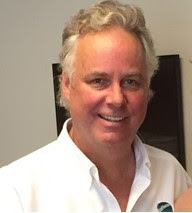
Flanigan’s EcoLogic: Friday at the Getty
Great to be headed to the Getty Center. Especially on a Friday. Sun is shining. Park the EV, hit the tram for the short ride up the hill, where at its crest sits the majestic center. The Getty’s views are stunning, from ocean to downtown, and the mountains beyond. And laying out before you, like a tapestry in time. Things slow down from the Getty’s overlook.
The experience begins as we step off the tram. I’d already met two others headed in the same direction, to this year’s summit. This is the Los Angeles Business Council’s 19th Annual Sustainability Summit, its 13th at Getty. Thanks to Mary Leslie and the LABC team for another inspiring summit. What follows are highlights that struck me.
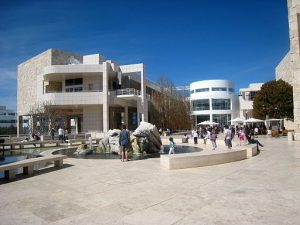
Roman Fuchs CC BY-SA 3httpscreativecommons.orglicensesby-sa3
There is energy in the Getty’s rarefied air, the energy that clearly reflects LA’s sustainability movement. LA is in action and proud of it. We are a mega-city with mega-goals in energy, water, buildings, and transportation to be sustainable. The conference reflected huge accomplishments in energy and mobility and water… and yes, continuing and highly daunting challenges… and deep optimism for technology and innovation and collective intelligence. Wow. That’s LA.
Our new Secretary of California’s Natural Resources Agency, Wade Crowfoot, would say it well later in the day: “Angelenos get it. The vision of mayor and county board is impressive. It would be one thing if it was a small city. San Francisco is a boutique city. LA is one of the largest metro areas in the world. LA is highly visible and highly respected and making progress at huge scale…. If you can pull it off, it will make a difference to the entire world.”
The City’s utility is headed by David Wright. To fulfill LADWP’s pledge to be off coal by 2025, “We have to reimagine our electric system. We’re looking at every resource.” LADWP’s FIT 150 program is now fully subscribed, the culmination of the nation’s largest feed-in tariff program. He’ll be going to his board for an additional 50 MW every year for four years. “FIT B” will include battery storage. In addition to utility-scale, solid-state batteries, LADWP is evaluating compressed air storage and a novel pumped storage scheme at Hoover Dam. Meanwhile it has a goal to install 25,000 EV chargers by 2025. It gave 1,500, $500 rebates for chargers in the past year. LADWP also provides rebates for used EVs.
LA’s Mayor Eric Garcetti is a motivator. He’s coined a new term related to climate change and our response: “anxitement”… a combination of anxiety and excitement. Garcetti talks about three types of citizen action related to climate: Those that are Future-Phobic (afraid of it), Future-Passive (let it be), and Future-Guiding (make it happen). To this, Lynn Jurich, CEO of Sunrun, added Future-Fast! We have to go faster was a conference theme, and Los Angeles has the solutions. And we take more steps: Mayor Garcetti has ordered that all wastewater discharges to the ocean must decease by 2035. That’s radical… no more outflow from the massive Hyperion plant.
The conference was buoyed with optimism. But challenges still loom large… from homelessness to equity. And another challenge was added: “We’re not a real city until I can get here [to the Getty] by subway,” said Assemblymember Laura Friedman. Despite huge gains in mass transit, “We have to be much bolder and to move much faster.” And we will.
Throughout the day at the Getty, the theme was reinforced that LA is the epicenter. We have the tools. We can tackle this. We have the technologies. We have storage with huge declines in cost. We can solve this; we just have to do it. The industry can offer solar plus storage at the same price as gas plant.
It’s OK to close LA’s gas plants. It’s cost effective today. That’s a huge step forward to decarbonizing and stabilizing the cost of electricity. Tom Buttgenbach of 8minuteenergy summed it up, “The market is or friend on this. It allows us to go faster…. LA is the beacon to the world. We can be what Silicon Valley was to computer world. The model, the approach, will be emulated across the country.”

 The big news in California is that there is water, water everywhere! California suffered historic drought from 2011 – 2017. Now the reservoirs are filling up and the snowpack is deep. And our leaders state that, “We will not be flat-footed another time.” To be clear, this year’s condition of rain and snow is a consequence of the impacts of climate change. Climate leaders tell us that we can expect intensive drought followed by unusual precipitation.
The big news in California is that there is water, water everywhere! California suffered historic drought from 2011 – 2017. Now the reservoirs are filling up and the snowpack is deep. And our leaders state that, “We will not be flat-footed another time.” To be clear, this year’s condition of rain and snow is a consequence of the impacts of climate change. Climate leaders tell us that we can expect intensive drought followed by unusual precipitation.

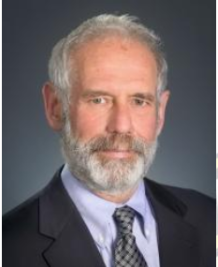
 Michael Picker shared not very comforting thoughts related to sustainability in his opening remarks. We may well be in a different kind of climate denial. “We may have ignored the fact that we have slid into the very dramatic effects of climate change.” Bankrupt due to the wildfires, PG&E is one of the largest business victims of climate change. And Picker believes that there may not be simple technical fixes to address the ferocity of the fire storms.
Michael Picker shared not very comforting thoughts related to sustainability in his opening remarks. We may well be in a different kind of climate denial. “We may have ignored the fact that we have slid into the very dramatic effects of climate change.” Bankrupt due to the wildfires, PG&E is one of the largest business victims of climate change. And Picker believes that there may not be simple technical fixes to address the ferocity of the fire storms.


 Further, Sunrun proposes to pay each homeowner $4,000 to install a battery in their home. Each homeowner would make a pledge to the utility to allow its capacity to be dispatched at critical periods. The network of storage would be cheaper than a transitional natural gas power plant and dispatchable not only in concert but localized as needed to support the local distribution system. “The math works…” Jurich said. There’s no up-front cost and when the grid goes down, these homes are safe places for family and community. Recently, Sunrun competed and won in the New England in energy auction, providing capacity from 5,000 homes.
Further, Sunrun proposes to pay each homeowner $4,000 to install a battery in their home. Each homeowner would make a pledge to the utility to allow its capacity to be dispatched at critical periods. The network of storage would be cheaper than a transitional natural gas power plant and dispatchable not only in concert but localized as needed to support the local distribution system. “The math works…” Jurich said. There’s no up-front cost and when the grid goes down, these homes are safe places for family and community. Recently, Sunrun competed and won in the New England in energy auction, providing capacity from 5,000 homes. Eric Garcetti states with pride that, “We’re creating the workforce of tomorrow!” “Climate change is our generational challenge, moral imperative, and a massive economic opportunity for Los Angeles.” “We know how to survive and we will find a way to survive.” Garcetti supports the Green New Deal in Washington. “They’re trying to figure it out at the national level.” Garcetti suggests that Washington look across the country to LA where we have already embodied a green new deal, where our sustainable city plan is based in economy, environment, and equity.
Eric Garcetti states with pride that, “We’re creating the workforce of tomorrow!” “Climate change is our generational challenge, moral imperative, and a massive economic opportunity for Los Angeles.” “We know how to survive and we will find a way to survive.” Garcetti supports the Green New Deal in Washington. “They’re trying to figure it out at the national level.” Garcetti suggests that Washington look across the country to LA where we have already embodied a green new deal, where our sustainable city plan is based in economy, environment, and equity. Ted Bardacke is the head of the Clean Power Alliance (CPA), the largest of California’s 19 community choice aggregation (CCA) providers. The CPA now has nearly one million customers and in a matter of months has become the fifth largest load serving entity in the State. CCAs promised to bring greener power to consumers sooner. The CPA is showing that it can be done!
Ted Bardacke is the head of the Clean Power Alliance (CPA), the largest of California’s 19 community choice aggregation (CCA) providers. The CPA now has nearly one million customers and in a matter of months has become the fifth largest load serving entity in the State. CCAs promised to bring greener power to consumers sooner. The CPA is showing that it can be done!